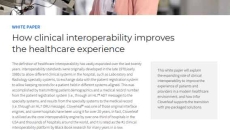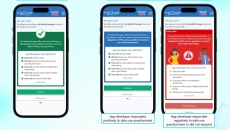Interoperability
Healthcare organizations will need to go through a three-step process to achieve post-quantum safety: Discover, observe and transform, says Scott Crowder, vice president of IBM's quantum-safe adoption team.
Interoperability standards were originally developed in the late 1970s and early 1980s to allow different clinical systems within hospitals to exchange data with the patient registration system. Infor Cloverleaf®, one of the original interface engines in use then, is still the core interoperability engine for more than one-third of U.S. hospitals.
A prehospital health information exchange in Michigan that provides bidirectional interoperability will bridge ambulatory data gaps and enhance care coordination en route to the hospital and during post-discharge care transitions.
As Italy develops a national digital strategy requiring healthcare data exchange across all 20 of its regions, Marco Foracchia, AUSL Reggio Emilia CIO, recommends first steps for hospitals that haven't yet begun digital transformation.
Patients can now release all their electronic health data to apps of their choice through TEFCA's record location services, and understand if the data exchange they authorize is protected under HIPAA.
It is part of initiatives to drive the wide adoption of digital health technologies in the healthcare sector.
The Department of Health and Aged Care has released the Aged Care Data and Digital Strategy and accompanying action plan.
Patients and their doctors can now access their digital health records from a single platform.
The Australian Digital Health Agency has outlined specific steps to increase the uptake of healthcare identifiers across health facilities.
Also, My Emergency Doctor has adopted InterSystems' cloud-based integration engine to offer improved systems interoperability.








